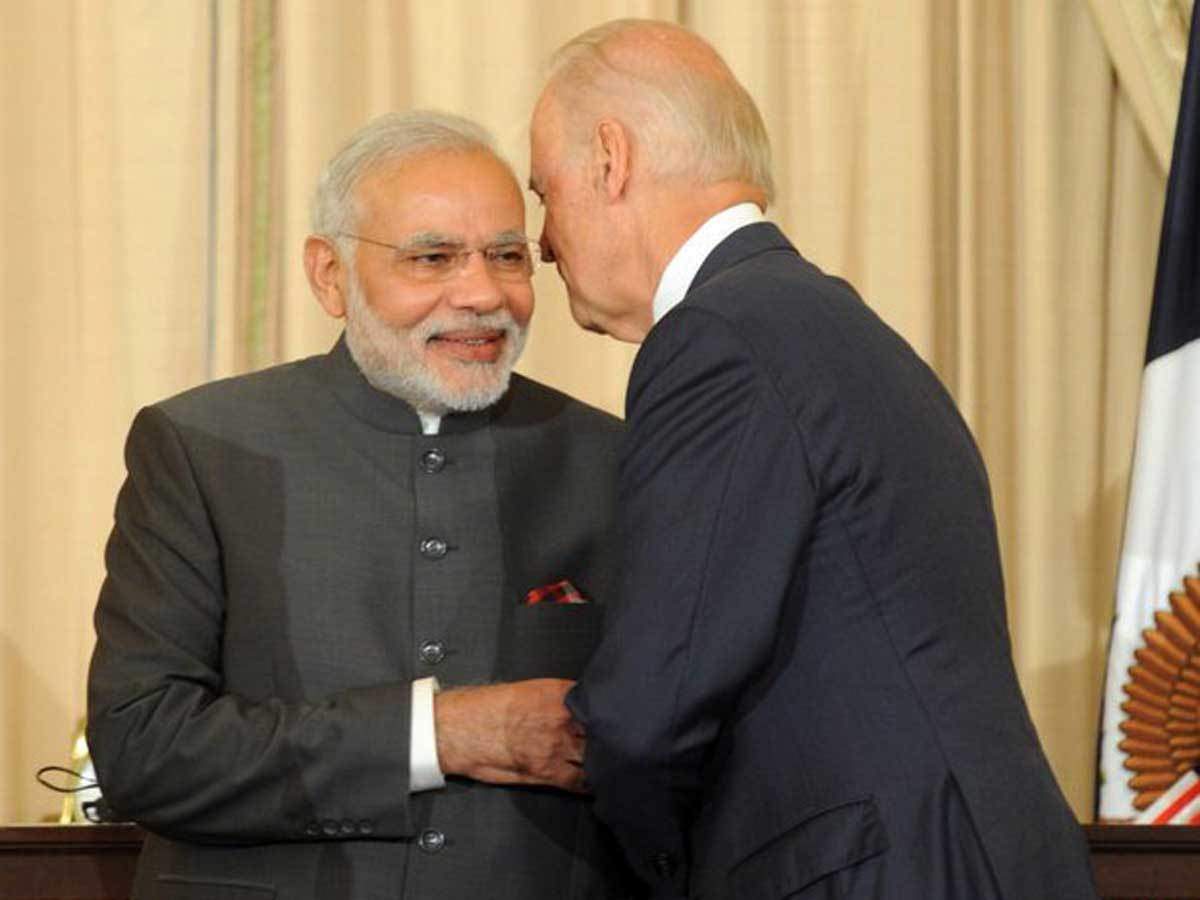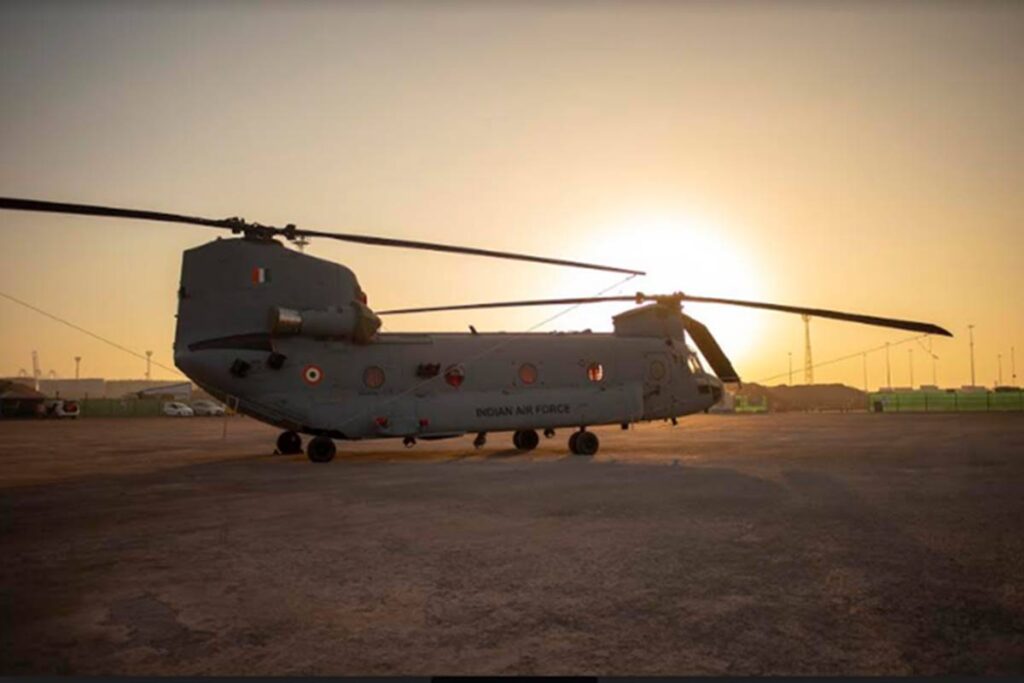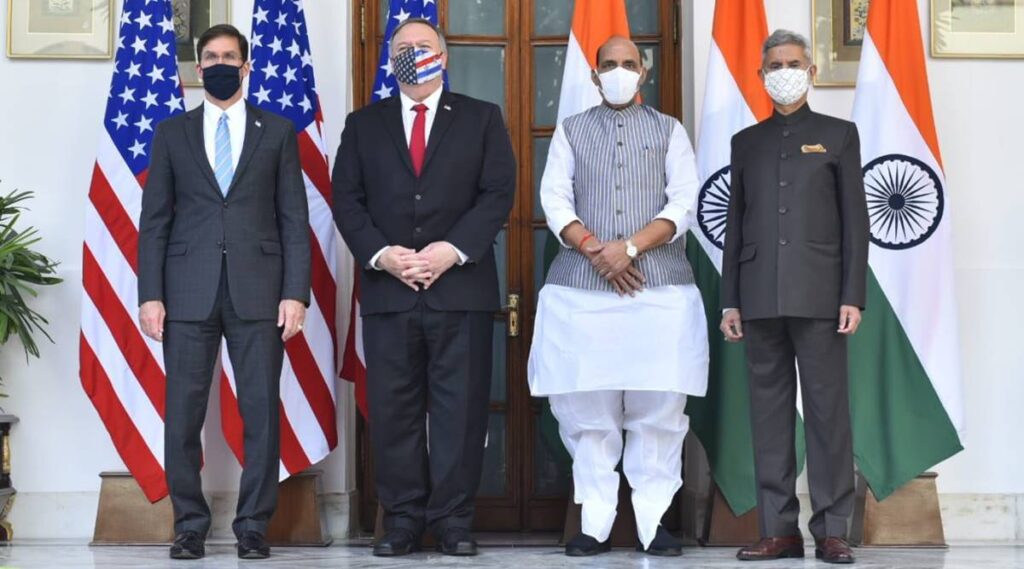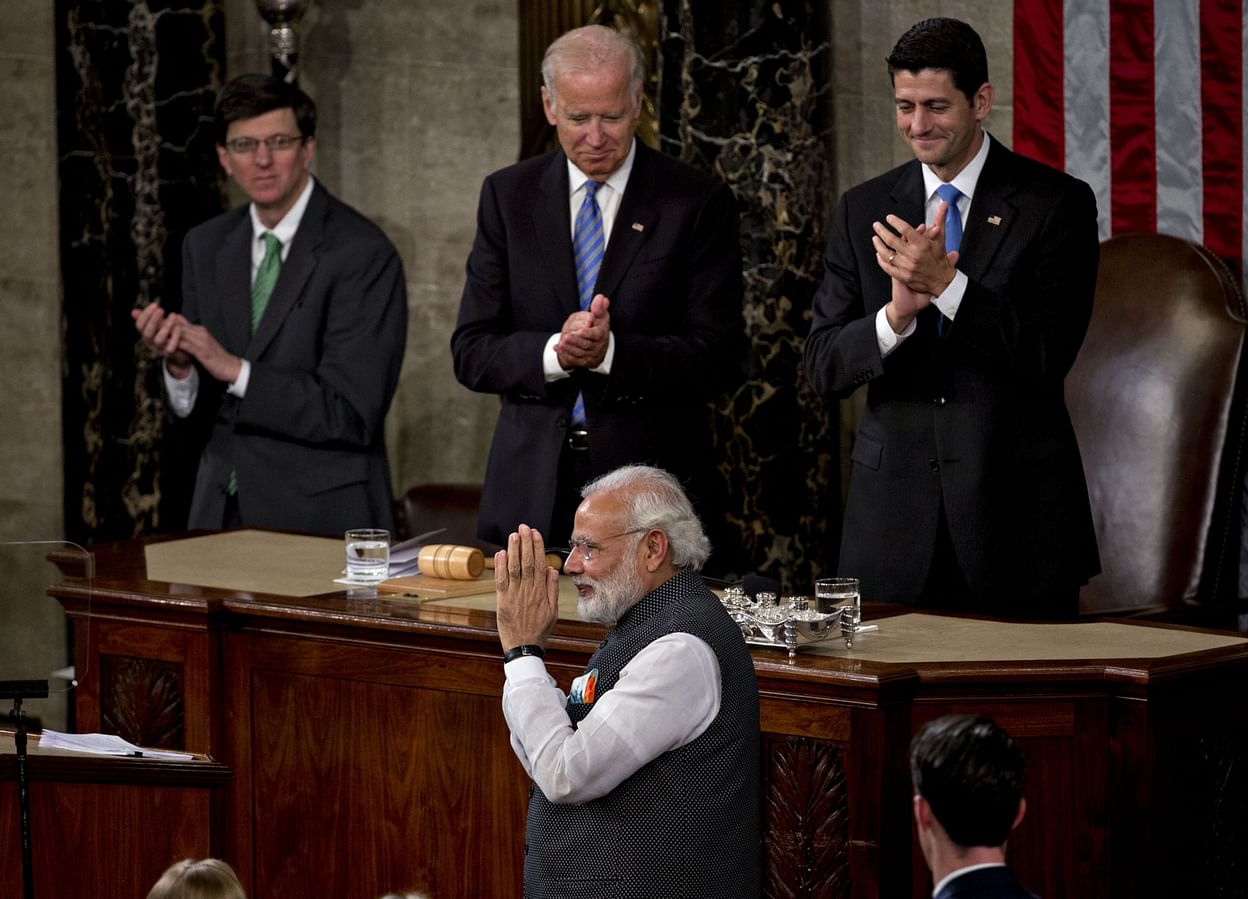India US relations can be best described as the partnership of the century. Separated by geography but united by democracy, multiculturalism, pluralism , people to people connect , government to government cooperation, trade partnership. India-U.S. bilateral relations have developed into a “global strategic partnership”, based on shared democratic values and increasing convergence of interests on bilateral, regional and global issues. The relationship enjoys bi-partisan support from all the major parties in both the countries.
In the last 20 years , the relations have taken into a significant shape, their relation has moved from dependence to interdependence . India needs the USA as a defence partner and the USA needs India to counter China’s rise , India needs USA as technology partner and the USA needs India as a large consumer. Over the years the relations have moved from a “Buyer- Seller” relation to “Strategic Partners”. Today, the India-U.S. bilateral cooperation is broad-based and multi-sectoral, covering trade and investment, defence and security, education, science and technology, cyber security, high-technology, civil nuclear energy, space technology and applications, clean energy, environment, agriculture and health.

Why does India matter to the USA ?
Trade & Investment :
India being home to 1.21 billion population remains as the natural choice for American for Trade & Investment . India’s growing economy , industrialisation , urbanisation and political stability & bi-partisan support to the USA further favours for a better Indian-American Relation . Bilateral trade between the two is $92.0 billion in total (two way) goods trade during 2019 making America as India’s largest trade partner and India as 9th largest trade partner of America.
Defence Ties:
Traditionally India was considered to be a close ally of Soviet , but post cold war era , India felt the needed a strong and reliable defence partner to preserve its hegemony in the subcontinent, the US becoming the natural choice to fill the gap felt further fall of Soviet. Given this burgeoning Indian market and India’s increasing prominence in Washington’s security calculus in the Indo-Pacific, there have also been substantial gains for the US, which is the largest arms producer and exporter in the world. During the period 2013-17, although Russia remained India’s largest supplier of arms by accounting for nearly 62 percent of India’s arms imports, US arms exports to India increased by over 550 percent. Since 2008, Indo-US defence trade has steadily increased from under US$ 1 billion to now over US$ 18 billion, to have the United States assume the spot of India’s second largest arms supplier.

Strategic Partners :
India was historically been reluctant to open up for a closer ties with the USA but the current Modi regime has shown no shying away from keeping Americans away, the change in New Delhi stance is due to the changing Geo-politics in the region which has left India with no better choice than to be a close friend of America. The growing strategic partnership has been reflected in institutionalisation of “2+2” Dialogue, frequent top level meetings between leaders of two currently . India has hosted Obama as Chief Guest during Republic Day, while the historic ‘Howdy, Modi’ event where Trump joined Modi in addressing a huge crowd of 50,000 Indian-Americans followed by Donal J Trump visit to India in 2020. The cooperation between India and the US has reached a new level when it comes to the Indo-Pacific region. The two countries are working with other like-minded partners in the Indo-Pacific to ensure that there is freedom of navigation and peace in the resource-rich region where China has been trying to spread its influence.
Counterbalancing China :
Conflict between China and India has made it urgently necessary for the US to deepen its economic integration with the latter country. The India-China standoff in the Galwan Valley and China’s geopolitical move to exploit the COVID-19 humanitarian crisis have just boosted the India-US strategic partnership.
“For a Multi-Polar world must have multipolar Asia as its basis”
Rising India’s Soft Power :
Size and influence of Indian Diaspora in America has grown over the years . America today hosts 4 million strong Indian Diaspora who have progressed to occupy the leading positions in American Society from Industry to Senate, Indian diaspora’s influence have reached an unprecedented level. Indian origin America today occupies the top post of some of some of America’s largest company viz. Google, Microsoft , were elected to the top legislative body and are even the candidate in the Presidential of USA.
Recent Progress in India -USA Relation :
2+2 Dialogue : The 2 + 2 Dialogue is a format of interaction between officials of two countries, between the Defence & Foreign Ministry of either country at the ministerial level. The objective of this dialogue mechanism is to raise defence and security issues to the forefront and centre of the relationship between India and the U.S. The 2+2 format provides for the annual consultations over a range of overlapping security and political issues between the foreign and defence ministers of both the countries . India has also established 2+2 Dialogue with Japan, Australia . India has now hosted the third Edition of 2+2 Dialogue with the USA. External Affairs Minister S Jaishankar and Defence Minister Rajanath Singh held 2+2 talks with Secretary Pompeo and Secretary Esper in New Delhi .

BECA Agreement : BECA, which is the last of four foundational agreements for strengthening defence ties would enhance the geospatial cooperation between India and the US and it is likely to help in improving the accuracy of missile systems of India. BECA is said to be one of the few basic deals that the United States signs with its close partners. The agreement pertains to exchange of Geospatial-Intelligence information for use by the governments for defence and other purposes.
Quad Institutionalisation : The Quadrilateral Security Dialogue among the United States, Japan, India, and Australia (The Quad) has returned to prominence after an eight-year hiatus.Senior foreign ministry officials from the Quad nations have met bimonthly, the grouping has also convened at the ministerial level and formed the basis for a tabletop exercise.
“Today the USA needs India and India needs the USA, the relations of interdependence will continue to forge closer ties between the two nations“
“The US-India strategic partnership has strengthened significantly during the past two decades, based on a convergence of strategic interests, and the United States and India continue to use their deepening relationship to build new partnerships. The emphasis placed by the Government in India on development and good governance has created opportunity to reinvigorate bilateral ties and enhance cooperation under the motto — “ChaleinSaathSaath: Forward Together We Go”, and Sabka Sath, Sabka Vikash and Sabka Vishwas (Shared Effort, Progress for All) adopted during the first two summits of Prime Minister Modi and President Obama in September 2014 and January 2015 respectively. The summit level joint statement issued in June 2016 called the India-U.S. relationship an “Enduring Global Partners in the 21st Century”. Their cooperation in HADR , Counter Terrorism, Joint Miliraty Excercise , Multi-lateral Excercise have further been deepend in last few years. Indian government action plans based on 3R i.e. Recovery , Resilience and Reform have significantly put India on a global map of leading powers in the Post Covid-19 era. Today the USA needs India and India needs the USA, the relations of interdependence will continue to forge closer ties between the two nations.
About Author :
Adarsh Ashok is a Mechanical Engineer works in a MNC and been selected as a Young Professional at NITI Aayog [Think Tank to Government of India] . He is also been a student of Political Science & International Relations and occasionally writes on topics of National & International importance.

Highly appreciable and informative article.
Each and every article published in NamasteBhart are good this article on Indo-US relation is superb.
Good one
Very informative..